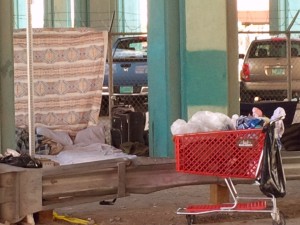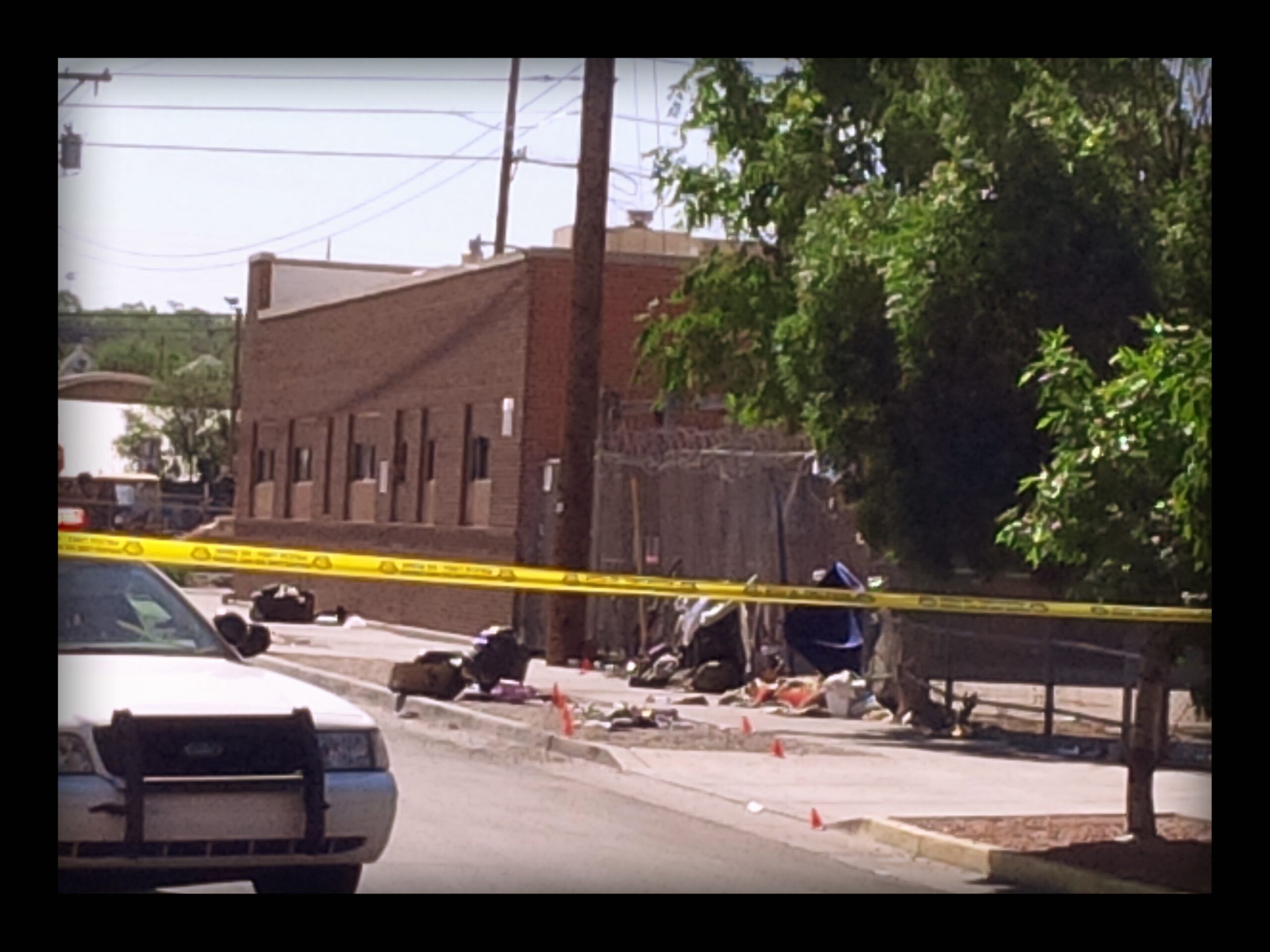By Jeremy Reynalds, Ph.D.
Founder and CEO
Joy Junction Inc.
A recent story by KOB TV 4 in Albuquerque reported that some Downtown business owners are just plain fed up. They say while homeless people come to eat at the Albuquerque Rescue Mission, once the facility closes its doors there’s no place for the homeless to use the restroom, and they just do so in alleyways or on the side of buildings.
On a trip through Downtown Albuquerque on a warm Saturday evening, I saw about 30 or so people outside the Mission in a well lit area either sleeping or preparing to sack out for the night. While there was a little movement, everything looked pretty calm. However, where they use the restroom is anyone’s guess.
Just a few hundred yards away from the Mission, where a number of homeless people had been “setting up camp” for a while, everything was deserted. However, it looked as if some of the same individuals had just moved a short distance northeast to a more secluded area under a nearby overpass.

Some homeless people formerly camped out on Iron in Downtown Albuquerque appear to have moved a little further from the Albuquerque Rescue Mission.
Having worked with New Mexico’s homeless for over 30 years, I sympathize with business owners’ concerns. However, there’s no quick fix, and it is unfair to blame the Albuquerque Rescue Mission and expect the City of Albuquerque to come up with an overnight answer. That just isn’t going to happen.
So what is the answer? Well, a collaboration starting off as a community conversation with the business owners (both those affected and citywide), the Mission and the City of Albuquerque would be a good place to start.
Also important to a solution-and an integral part of the initial discussion- would be an understanding of exactly who some of the people are featured in the video “Downtown Business Owners Fed Up” and why the Mission and other shelters are unable to help them.
While Joy Junction, the homeless shelter which I founded almost 30 years ago and continue to lead, is in the South Valley and far removed from the concentration of other assistance for the homeless, our van services extend to Downtown Albuquerque.
We also make regular patrols through Downtown during the night to see if there is anyone wanting a place to stay, and drop off sack lunches and bottled water.
So who are some of the people causing the current wave of concern?
Based on both my own personal observation and talking with our staff, they include those who would like a place to stay if offered, but are unable to access one because all the shelters (as well as Joy Junction) are full, people with mental health challenges unable to be around the usually large number of people in a shelter, individuals with a history of violence and also drug dealers who try to blend in with the homeless.
And on top of that, there are those in the throes of an active drug or alcohol addiction. Before you write them off, consider this question. What was going on in someone’s life that drove them to try and find a refuge for their pain in illegal drugs or the inappropriate use of alcohol?
To make things harder, MATS-the local detox and an excellent facility, won’t service anyone with a warrant. That’s an obvious issue, as a number of homeless individuals who get a summons to appear in court for say, panhandling, fail to appear in court and the failure to appear becomes a warrant. Who wants a trip to jail to get off your addiction?
So more complicated than you thought, right? I wondered what Facebook friends and fans thought could be done.
Lynda suggested that homeless services “be spread .. around a little.” However, she had it right when she speculated, “I’m sure all hell would break loose if someone dared to try and open a facility in the NE heights or Taylor Ranch area.”
Zoning regulations and neighborhood opposition make it very difficult-almost impossible-to start new missions/feeding centers. The old acronym NIMBY comes to mind-not in my back yard. Everyone agrees that something should be done, but the answer shouldn’t be close to them.
I thought that Rachel had a good point, saying her guess is that half of the businesses complaining only offer a restroom for their customers.
She continued, “If you don’t want them defecating around your business, how about offering a restroom for them? You keep an eye out so there are no issues (drug violence etc), and that problem is solved – sorta – rather than putting the responsibility all on the city.”
She added that while these business owners would say that’s bad for business, perhaps there’s another side to that argument. “Showing compassion versus hostility would be a great virtue in a business owner.”
The KOB reporter asked a city official why the city just couldn’t just put up a couple of Porta Potties. The answer was that it could “add to the problem.”
Presumably he was thinking of the same answer former city official Pete Dinelli gave years ago when I suggested Porta Potties: that they can encourage prostitution and drug use/dealing.
Donna said that despite probably problems with public restrooms, they should still be provided. She added, “Perhaps some of the more reliable, responsible ones could be in charge of cleaning and maintenance, which would give a sense of purpose and worth.”
The restrooms idea is a good one, Donna, but I don’t think having the homeless providing cleaning services would work. I like what someone else said, that perhaps the only-or best solution at the moment-is to have a city crew clean them up in shifts.
However, Donna had it right when she wrote, “There are never simple straight forward answers because the problem itself is neither …. But, that shouldn’t mean we give up and wash our hands. It means we should dig deeper and think outside the box. During these times of hardship for everyone, I think we need to dig deeper inside ourselves as well.”
This is a multifaceted issue. It will only be alleviated when our entire community takes on the responsibility for the less fortunate among us and communicates instead of blames and ignores.



